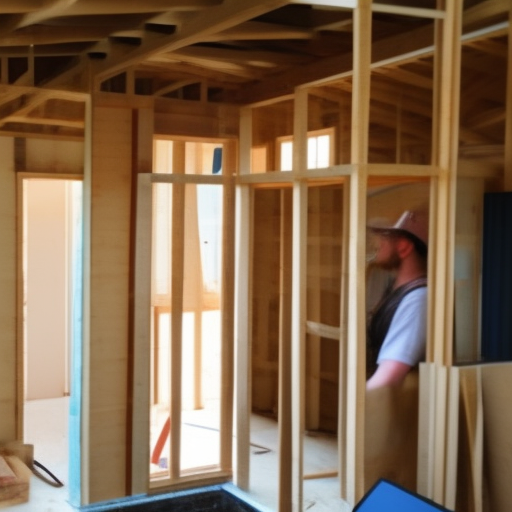Are you looking for a way to downsize your living space and live a simpler life? Look no further! Building tiny dreams and living tiny is the latest trend in downsizing; and with the right know-how and guide, you can turn your tiny house dreams into reality and build the house of your dreams. This article will guide you through the process of tiny house framing, so you can begin constructing your tiny dream house!
Overview of Tiny House Framing
Tiny house framing is an essential part of building a small home that is both practical and beautiful. Often, people opt for tiny houses due to their minimalistic yet aesthetically pleasing design. The framing process in tiny homes is relatively simpler than traditional homes, and with proper planning, it can be completed efficiently.
One of the most popular types of tiny house framing is called the stick frame method. In this method, individual pieces of wood are used to create the frame, which is then covered with sheathing and insulation. Another technique used in tiny house framing is the SIPs (Structural Insulated Panels) method. It involves creating a strong, insulated core of foam board, sandwiched between two layers of strand board or plywood. Both these methods have their advantages, and choosing the right one depends on many factors such as budget, personal preferences, and the type of environment you live in.
Tools and Materials Needed
When it comes to tools and materials, the key is to make sure you have everything you need before you start working. Depending on what you’re doing, different tools might be required, but here are some essentials to get you started.
– Hammer: A good hammer is a must-have tool. Whether you’re pounding nails or breaking something, a hammer is your go-to.
– Screwdriver: A screwdriver is essential to any toolkit. It’s perfect for tightening screws, removing stubborn bolts, and much more.
– Pliers: Pliers come in handy when you need to grip something tightly or need a little extra leverage. They can be used for a variety of tasks, including wire cutting and bending.
When it comes to materials, some of the basics include:
– Nails: Nails come in various sizes and types, so it’s important to choose the right ones for your project.
– Screws: Similar to nails, there are different types and sizes of screws that you’ll need to consider.
– Glue: Sometimes, you need an adhesive to bind two surfaces together. Glue comes in many forms, such as wood glue, white glue or epoxy, and each has its own use.
Remember, always check to make sure you have everything you need before starting a project. By being prepared and having the right tools and materials, you’ll be able to tackle anything that comes your way.
Understanding Structural Components
Structural components are the backbone of any building. They are crucial in creating a sturdy and stable structure that can withstand the test of time. These components provide support and stability, and without them, buildings wouldn’t be able to stand tall.
One of the most important structural components is the foundation. Think of it as the feet of a building. A foundation distributes the weight of a building and anchors it to the ground. Without a strong foundation, a building can sink, shift or even collapse. Other essential structural components include beams, columns, and walls. Beams are horizontal components that support the weight of the structure, while columns are vertical components that transfer the weight of the building to the foundation. Walls provide structural support and also act as partitions to divide the space inside a building. Understanding the roles of each of these components is essential to ensure that they are installed and maintained correctly for the safety of the occupants.
Step-by-Step Instructions for Framing a Tiny House
Have you ever dreamed of having a tiny house of your own? Building a tiny house from scratch can be a daunting task, but with the right tools and knowledge, anyone can do it! In this step-by-step guide, I will take you through the process of framing a tiny house.
First things first, make a plan! Draw out your design on paper or use a 3D modeling software to get a better idea of what your tiny house will look like. Once you have your plan in place, you will need to gather all of your materials. This includes lumber, nails, screws, and tools such as a saw, hammer, and drill. It’s important to have everything you need before you start, so you don’t have to stop in the middle of the project to go buy materials.
Next, it’s time to start framing! Lay out the bottom plate on your foundation and secure it with anchor bolts. Then, begin to frame the walls using 2×4 lumber. You can use a framing nail gun to make the job go faster. Make sure your corners are square and your walls are level. Add window and door openings as you go. Once your walls are up, it’s time to add the roof. Use 2×6 lumber to create rafters and secure them to the top of the walls. Finally, add sheathing to the roof and walls to create a sturdy structure. And there you have it – the start of your very own tiny house! Dream big and build tiny! Tiny house framing is a great way to realize your unique vision for a cozy and comfortable living space, where you can truly make a home out of something small. With this guidance, you can confidently make your tiny house dreams come true.